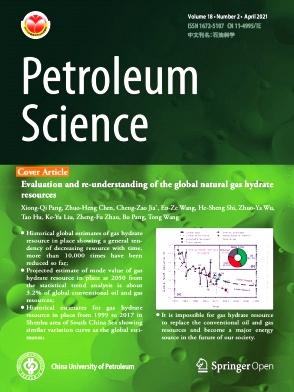Intelligent seismic AVO inversion method for brittleness index of shale oil reservoirs
IF 6
1区 工程技术
Q2 ENERGY & FUELS
引用次数: 0
Abstract
The brittleness index (BI) is crucial for predicting engineering sweet spots and designing fracturing operations in shale oil reservoir exploration and development. Seismic amplitude variation with offset (AVO) inversion is commonly used to obtain the BI. Traditionally, velocity, density, and other parameters are firstly inverted, and the BI is then calculated, which often leads to accumulated errors. Moreover, due to the limited of well-log data in field work areas, AVO inversion typically faces the challenge of limited information, resulting in not high accuracy of BI derived by existing AVO inversion methods. To address these issues, we first derive an AVO forward approximation equation that directly characterizes the BI in P-wave reflection coefficients. Based on this, an intelligent AVO inversion method, which combines the advantages of traditional and intelligent approaches, for directly obtaining the BI is proposed. A TransU-net model is constructed to establish the strong nonlinear mapping relationship between seismic data and the BI. By incorporating a combined objective function that is constrained by both low-frequency parameters and training samples, the challenge of limited samples is effectively addressed, and the direct inversion of the BI is stably achieved. Tests on model data and applications on field data demonstrate the feasibility, advancement, and practicality of the proposed method.
页岩油储层脆性指数AVO智能反演方法
在页岩油勘探开发中,脆性指数(BI)是预测工程甜点和设计压裂作业的重要依据。地震振幅变化偏置反演是一种常用的反演方法。传统的方法是先对速度、密度等参数进行反演,然后再计算BI,这往往会导致累积误差。此外,由于现场工作区域测井资料的有限性,AVO反演通常面临信息有限的挑战,导致现有AVO反演方法得到的BI精度不高。为了解决这些问题,我们首先推导了一个AVO正演近似方程,该方程直接表征了p波反射系数中的BI。在此基础上,提出了一种结合传统AVO方法和智能AVO方法优点的智能AVO反演方法,可直接获取BI。建立了TransU-net模型,建立了地震数据与BI之间的强非线性映射关系。通过引入同时受低频参数和训练样本约束的组合目标函数,有效解决了样本有限的挑战,稳定地实现了BI的直接反演。模型数据的测试和现场数据的应用证明了该方法的可行性、先进性和实用性。
本文章由计算机程序翻译,如有差异,请以英文原文为准。
求助全文
约1分钟内获得全文
求助全文
来源期刊

Petroleum Science
地学-地球化学与地球物理
CiteScore
7.70
自引率
16.10%
发文量
311
审稿时长
63 days
期刊介绍:
Petroleum Science is the only English journal in China on petroleum science and technology that is intended for professionals engaged in petroleum science research and technical applications all over the world, as well as the managerial personnel of oil companies. It covers petroleum geology, petroleum geophysics, petroleum engineering, petrochemistry & chemical engineering, petroleum mechanics, and economic management. It aims to introduce the latest results in oil industry research in China, promote cooperation in petroleum science research between China and the rest of the world, and build a bridge for scientific communication between China and the world.
 求助内容:
求助内容: 应助结果提醒方式:
应助结果提醒方式:


